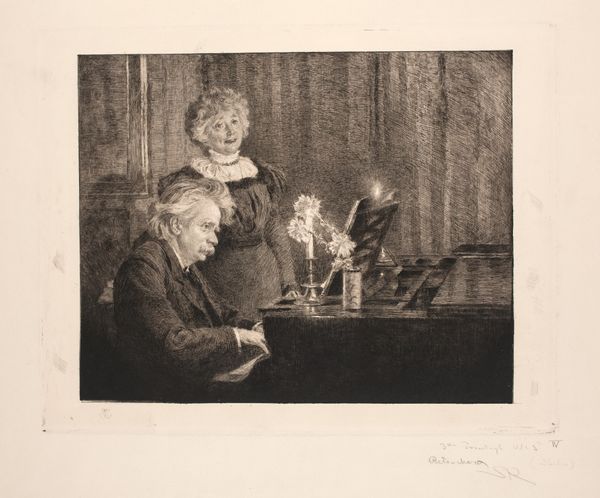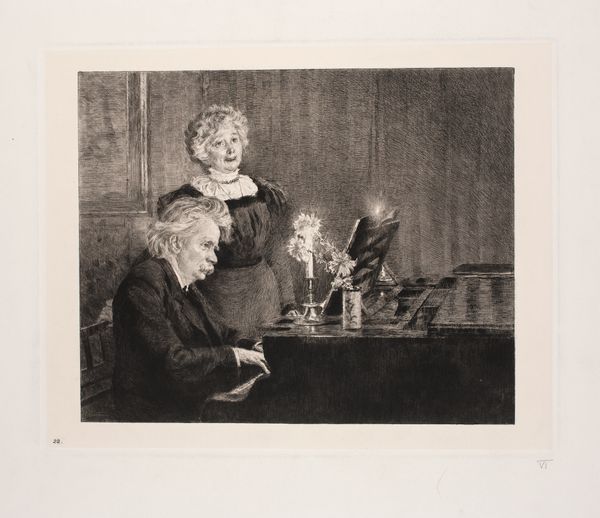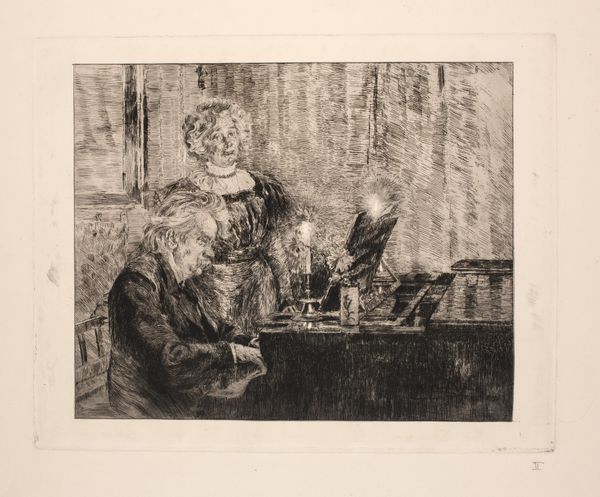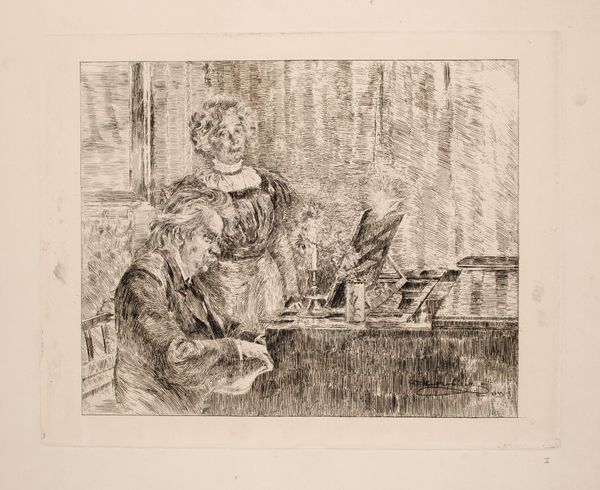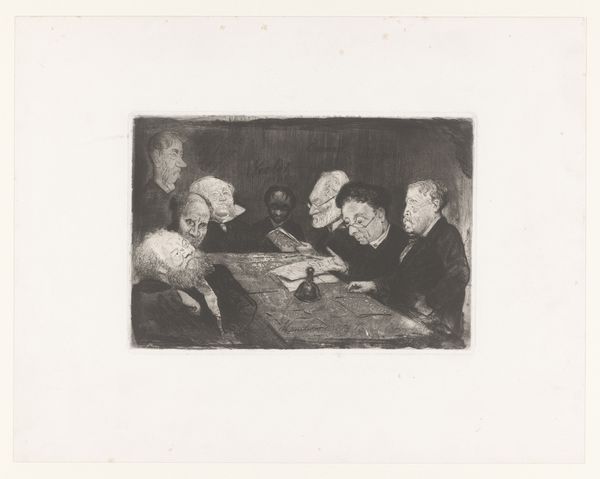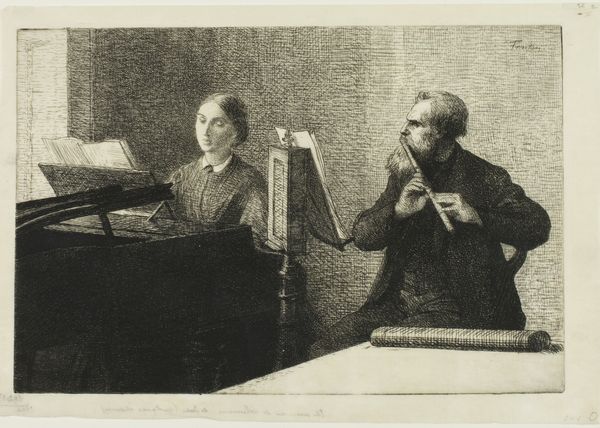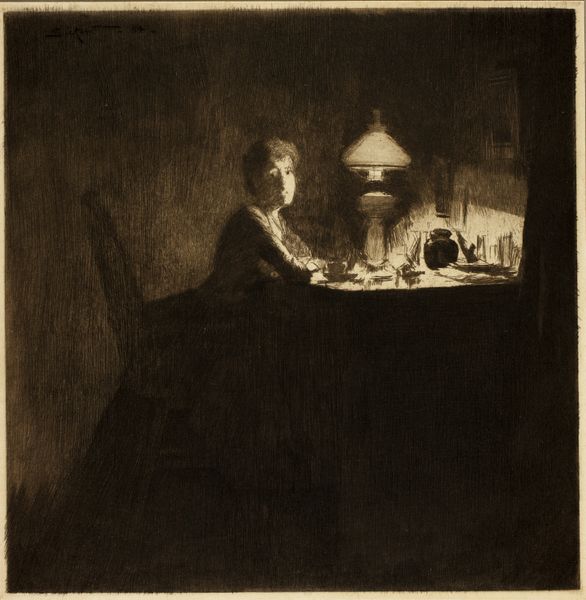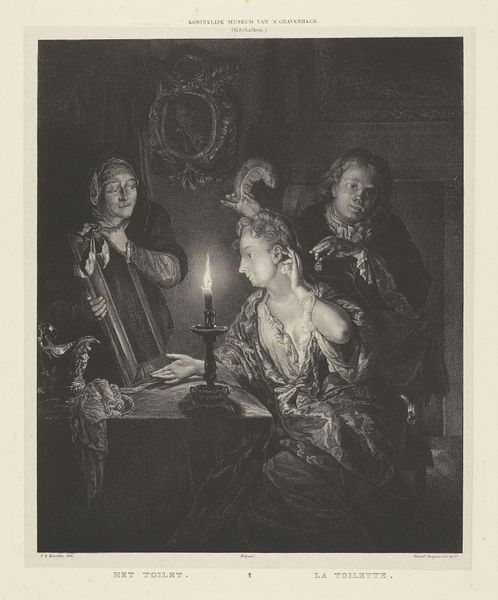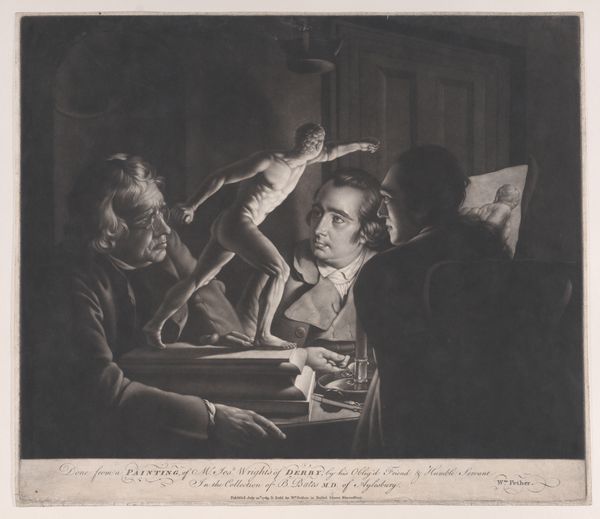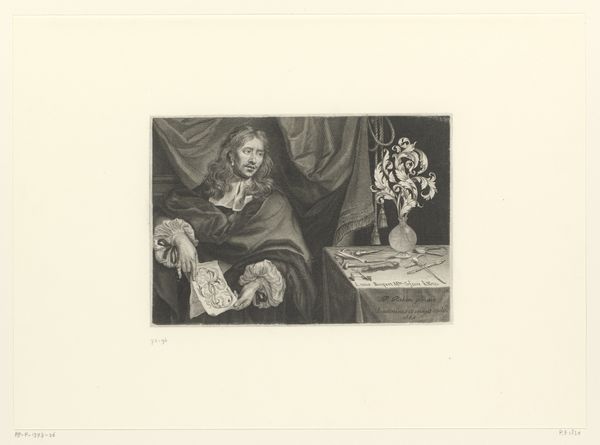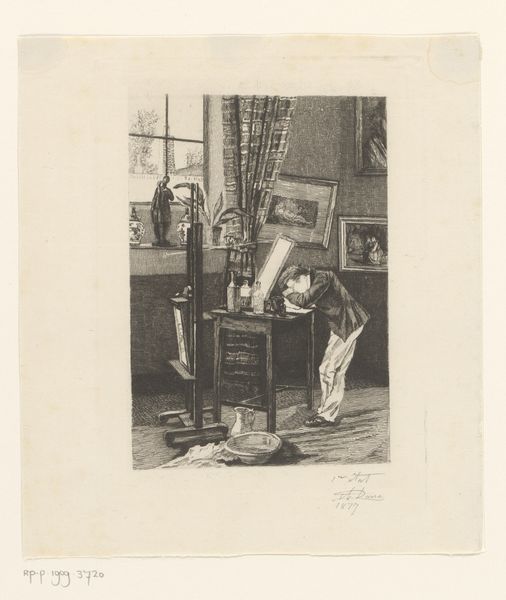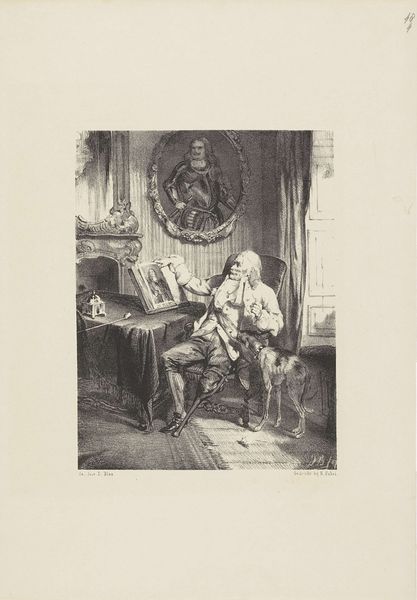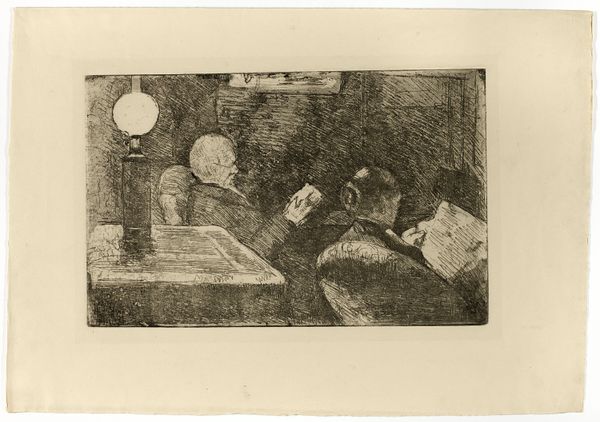
Dimensions: 385 mm (height) x 487 mm (width) (plademaal)
Curator: This print, created in 1899 by P.S. Krøyer, depicts Edvard and Nina Grieg at the piano. The technique is engraving, a medium well suited for intimate portraits. Editor: It has a subdued, almost melancholic mood. The limited light really emphasizes the textures and subtle variations in tone achieved by the engraving process. Curator: Absolutely. We see the Griegs captured in a domestic moment, where music and companionship converge. Consider Nina’s role beyond that of muse; she was also a celebrated vocalist and his artistic partner. Editor: The print itself invites us to consider reproduction and dissemination. As a readily multiplied image, it served to socialize the domestic life of the bourgeois musician and composer, making him knowable. Curator: Indeed. And it positions them within a specific cultural milieu. They’re framed by bourgeois comforts, like the piano and flower arrangement, indicators of their class and access. The candlelight contributes to the visual dynamic but, what could that mean for our understanding of societal expectations surrounding gender, domestic life, and artistic collaboration at the end of the nineteenth century? Editor: Well, that flickering candle is integral. Not just as a romantic gesture but as a method of viewing the artwork – revealing how light manipulated in the space mediates the viewing experience. Without advanced technology, Krøyer relies on accessible domestic light and the work itself makes clear this reliance. Curator: It's fascinating to see the details emerge through the engraving. There’s something compelling in witnessing their shared intimacy through this reproduced image, adding layers to its significance within cultural and social norms. Editor: Definitely. We observe labor embedded in the material—from the engraver's hand to Grieg’s musical composition—each act contributing to a larger matrix of cultural production. It offers unique insights into the Grieg’s world and this reproduction shows the ways it enters ours. Curator: By positioning the print in the context of music and the construction of celebrity, we also see how societal frameworks influence individual identities and their representations. Editor: Indeed. Understanding the conditions under which artworks are made—and how materials are wielded to shape our viewing habits—creates an intersection between history, reception, and social relations.
Comments
No comments
Be the first to comment and join the conversation on the ultimate creative platform.
